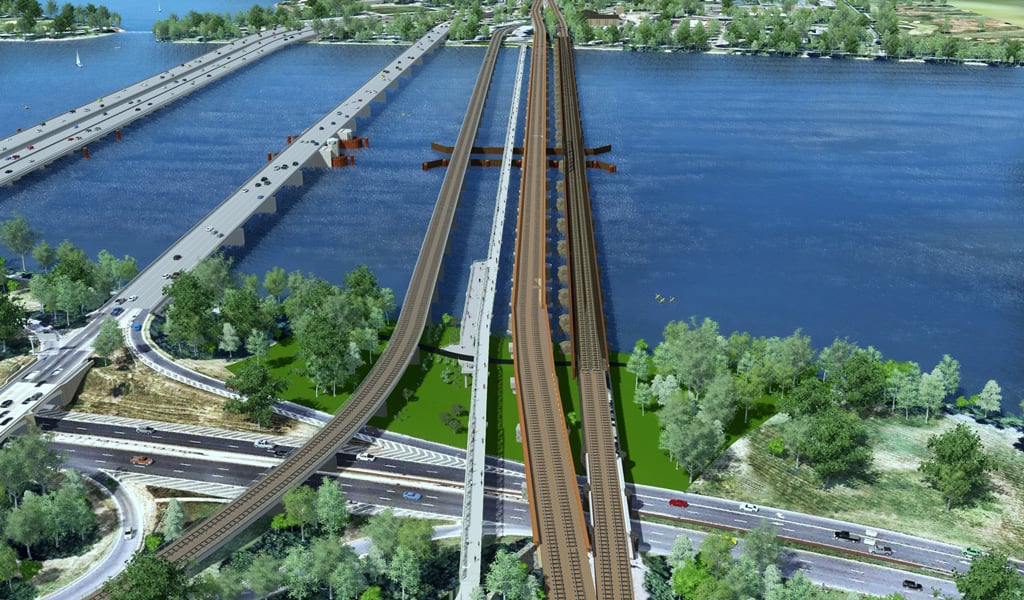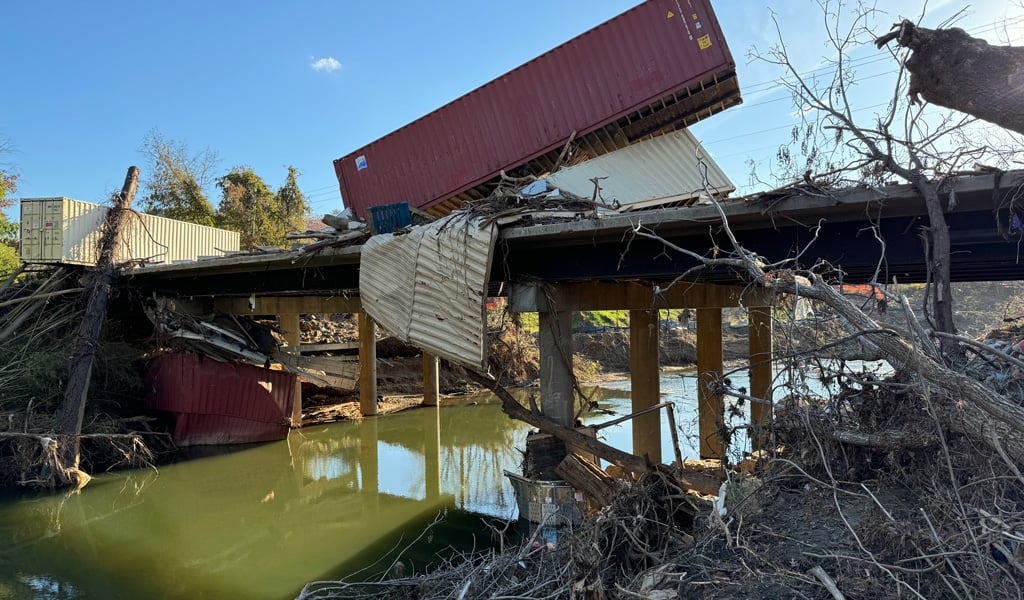Forward-thinking insights focused on a more sustainable tomorrow.
The Emergence of Progressive Design Build: A Collaborative Approach for Modern Infrastructure Delivery
Across our industry, infrastructure delivery is shifting, with owners and project teams seeking innovative approaches to manage complexity, risk, and increase collaboration. Alternative delivery has become a preferred method, including design-build, construction manager at risk (CMAR), construction manager/general contractor (CMGC), and public-private partnerships (P3s). Among these, progressive design-build (PDB) has emerged as a compelling alternative to traditional design-build models, offering a more flexible, collaborative, and transparent process.

As PDB continues to gain momentum across the infrastructure sector, its collaborative approach is reshaping how owners and project teams manage risk, cost, and delivery. While the model offers significant benefits, including enhanced transparency, reduced risk, and improved alignment between owners and design-build teams, it also presents challenges, from market-driven pricing pressures to regulatory variability across jurisdictions. Navigating the complexities of PDB requires a keen understanding of the pros and cons, a focus on collaboration and innovation, and knowledge of evolving trends and regulations.
Procurement, Collaboration & Risk: Progressive vs. Traditional Design-Build
Progressive design-build emphasizes a qualifications-based procurement model and fosters collaboration among designers, contractors, and owners. Unlike traditional design-build, PDB allows for negotiated pricing after collaborative risk assessment, delaying guaranteed maximum price (GMP) finalization until all parties are informed. This approach enables more accurate pricing and reduces the need for contractors to add cost to cover unquantified risk factors. By fostering transparency and deeper exploration of project cost drivers, PDB aims to reduce risk and create opportunities for improved pricing and project delivery.
PDB vs. Traditional DB
Procurement
Progressive Design-Build:
- Qualifications based
- GMP negotiated after design development
Traditional Design-Build:
- Selection based on best value with firm fixed price, qualifications and technical approach heavily rated
- Limited design information (15-30%)
Collaboration
Progressive Design-Build:
- Involves owner, contractor & designer
- Ample time for collaboration & partnership
- Transparent scope, cost & risk discussions including independent cost engineer
Traditional Design-Build:
- Contractor and designer collaborate separately from owner
- Limited input from owner for cost transparency & risk mitigation
Risk
Progressive Design-Build:
- Reduced risk for all parties
- Identify, quantify & mitigate risks together before finalizing price
- Unknown costs are reduced
- More predictable outcomes, fewer disputes
Traditional Design-Build:
- Contractors bear significant risk for cost overruns resulting from incomplete design information
- Contractors may absorb unforeseen costs
- Costs may be inflated to cover unknown risks
PDB Benefits & Challenges
While PDB is emerging, its benefits are already apparent: enhanced collaboration results in greater transparency and reduced risk. It fosters adoption of an “open-book” approach and environment, where owners and design-build teams work together to identify cost drivers and risks, leading to more efficient pricing. In contrast to traditional design-build, which requires a fixed price based on limited design information, PDB allows more time for all parties to understand cost and risk factors and then work together toward a negotiated price. Owners can make better decisions, and contractors face fewer unexpected costs and the need to absorb unanticipated losses. Although some jurisdictions may require a price component during selection (e.g., bidding a portion of the design or preconstruction fees), teams establish the guaranteed maximum price later in the design process. This upfront resolution of cost differences is less adversarial than the claims process in traditional delivery models.
But, like any delivery approach, PDB is not without challenges.
External factors like inflation, tariffs, and third-party utility adjustments can increase costs, often surpassing initial budget estimates. Recent shifts in market conditions during project development have led to significant price increases, driven primarily by inflation and tariffs, which have outpaced owner estimates and complicated budget alignment. Owners typically establish budgets at the start of a project, but by the time the team reaches 60-70 percent design and is ready to set the GMP, costs may be out of alignment due to scope adjustments or market shifts. In extreme cases, owners may opt to pay the design builder for the pre-construction work performed to date, retain the designer to finish the design, then bid 100 percent plans out for construction. In this case, the contractor focuses on delivering at an efficient pace at the lowest cost, while the owner maintains control of the design and high quality. This highlights the importance of ongoing collaboration and risk management throughout the project lifecycle.

PDB implementation varies among different states and agencies. Procurement models and statutory authority are inconsistent, leading to different approaches and requirements. As an example, Florida uses a “phased design-build” model, which shortlists three teams based on qualifications, reimburses them for their efforts during procurement, but ultimately selects the winner based on lowest GMP. Opinions vary on whether this model is progressive, with some seeing it as innovative and others feeling it reverts to traditional design-build principles. Intrastate differences like this can blur the distinction between the two approaches. Owners embarking on their first PDB or collaborative delivery models often implement them in slightly different ways, requiring diligence and adaptability from design-build teams.
Regulatory Landscape & Market Adoption
As use of alternative delivery methods continues to increase, we expect to see more widespread adoption of PDB. Currently, however, not all owners have statutory authority to use PDB the same way they do DB or CMGC. Certain states and agencies have procurement regulations that prohibit qualifications-based selection without including a price component, restricting the use of PDB. State legislatures may be reluctant to grant this authority due to concerns about relinquishing price control.
The lack of a one-size-fits-all approach means that design-build teams must be diligent in understanding each owner’s procurement process and regulatory environment. This includes staying informed about the latest trends and best practices—and adapting to the specific requirements of each authority. As agencies and municipalities continue to explore PDB and other collaborative delivery models, a benefit is the model’s flexibility across project sectors and sizes. PDB is used in the transportation and water sectors for a range of projects, including both large-scale billion-dollar initiatives and smaller scale improvements. PDB can also be used for urgent infrastructure needs, such as rebuilding after extreme weather events or emergency situations.

How VHB Can Help
VHB’s experience and commitment to strong client relationships—both owners and contractors—position us to not only navigate the intricacies of progressive design-build but to excel in this environment. Our established partnerships with contractors, deep understanding of owner needs, and adaptability to diverse procurement models allow us to deliver tailored solutions that maximize the advantages of PDB. Whether providing advisory services or leading design-build delivery, VHB helps clients achieve innovative, collaborative, and successful outcomes as project delivery continues to evolve.
Want to learn more? Connect with Chris today to start delivering innovative infrastructure solutions for tomorrow.



